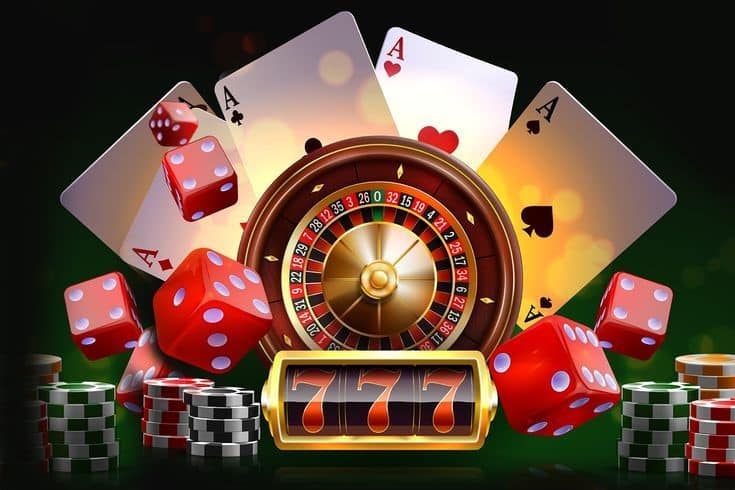Casino experiences have long captivated people’s attention, drawing participants into a realm filled with chance, planning, and the allure of adventure. Each game is meticulously crafted not just for enjoyment, but also to elicit specific emotional responses that keep players involved and committed. Understanding the drives behind these designs reveals much about how human psychology plays a vital role in the gaming experience.
From the vivid lights and lively sounds to the sophisticated layering of systems and payoffs, casino games are designed to create an atmosphere of thrill and expectation. Game designers leverage behavioral strategies to influence player behavior, whether through the use of winning opportunities, near-miss scenarios, or social connections. By examining these factors, we can better appreciate how casino games fulfill not just a need for entertainment, but underlying psychological needs for thrill and risk.
Grasping Player Behavior

Casino games are designed with a deep comprehension of player psyche, which is essential for luring and keeping players. The excitement of the game, alongside the anticipation of winning, creates a strong draw. Game designers make use of elements like sound effects, dynamic graphics, and immersive gameplay to engage attention and evoke emotional responses. These sensory elements enhance the overall experience, making players feel more invested in the game.
Another significant aspect of player behavior is the concept of risk versus reward. Casino games often manage risky situations with the potential for substantial rewards, which can lead to the phenomenon known as near-miss effect. When players come near to winning, the brain releases dopamine, strengthening their behavior and motivating them to continue playing in search of that hard-to-reach win. This cycle of hope and disappointment plays a critical role in how games are structured and promoted.
Lastly, social elements also play a pivotal role in player behavior at casinos. Many games are made to be played in groups or with other players, creating a sense of togetherness and shared experience. The interaction inherent in games like poker enhances enjoyment and can lead to prolonged gaming periods. Designers leverage on this by crafting environments that prompt players to stay, connect, and return, making the overall casino experience more attractive.
The Role of Imagery and Sound
Visuals and audio play a crucial role in elevating the gambler’s experience within casino games. Designers utilize vibrant colors, striking graphics, and captivating animations to capture gambler’s attention and sustain their focus. The use of motifs, such as exploration or opulence, helps create an engaging atmosphere that transports players into a different world. By connecting to the senses, these elements add to a intensified emotional response, prompting players to interact more profoundly with the games.
Audio design is equally important in enhancing the experience of gambling games. The mix of background music, sound effects for winning combinations, and ambient noises creates an auditory landscape that keeps players enthralled. Audio cues associated with wins, such as chiming bells or celebratory music, evoke feelings of excitement and satisfaction, prompting players to keep playing. These audio cues are strategically placed to amplify the excitement of the game and create a more immersive experience.
Moreover, the synchronization of imagery and sound is crucial for reinforcing the game’s overall theme and mood. Each element should align harmoniously to create a unified experience that pulls players in. The effective use of this synergy not only improves user enjoyment but also increases the chances of repeat play, as players become more engaged in the immersive world that the gambling games offer. This thoughtful combination of visuals and sound ultimately enhances player engagement and loyalty.
Reward Structures and Participation
The design of casino games heavily depends on reward systems to keep participants engaged and coming back for additional experiences. These structures are based in behavioral principles that exploit human behavior and motivation. Participants are often driven by the thrill of winning, which is reinforced by instant feedback through the game’s mechanics. This prompt satisfaction not only improves the overall experience but also fosters a sense of success, prompting participants to keep participating in hopes of greater rewards.
Casinos utilize various incentive systems, such as jackpots, extra rewards, and increased rewards, to engage players. These features create a level of excitement that maintains engagement. Additionally, the randomness of outcomes plays a crucial role in sustaining interest. The intermittent reinforcement schedule, where wins are random but occur often enough, keeps participants on edge and motivated to keep playing. This loop of hope and anticipation is essential to the effectiveness of casino games. https://u8888.video/
Moreover, social elements, such as competitive events and multiplayer features, enhance the engagement factor by leveraging the competitive nature of players. The shared experience of playing with others can amplify the thrill of success and create a community atmosphere within the gaming space. By integrating these social dynamics with efficient reward systems, gambling experiences not only offer fun but also nurture a stronger bond among players, reinforcing their commitment to the overall experience.